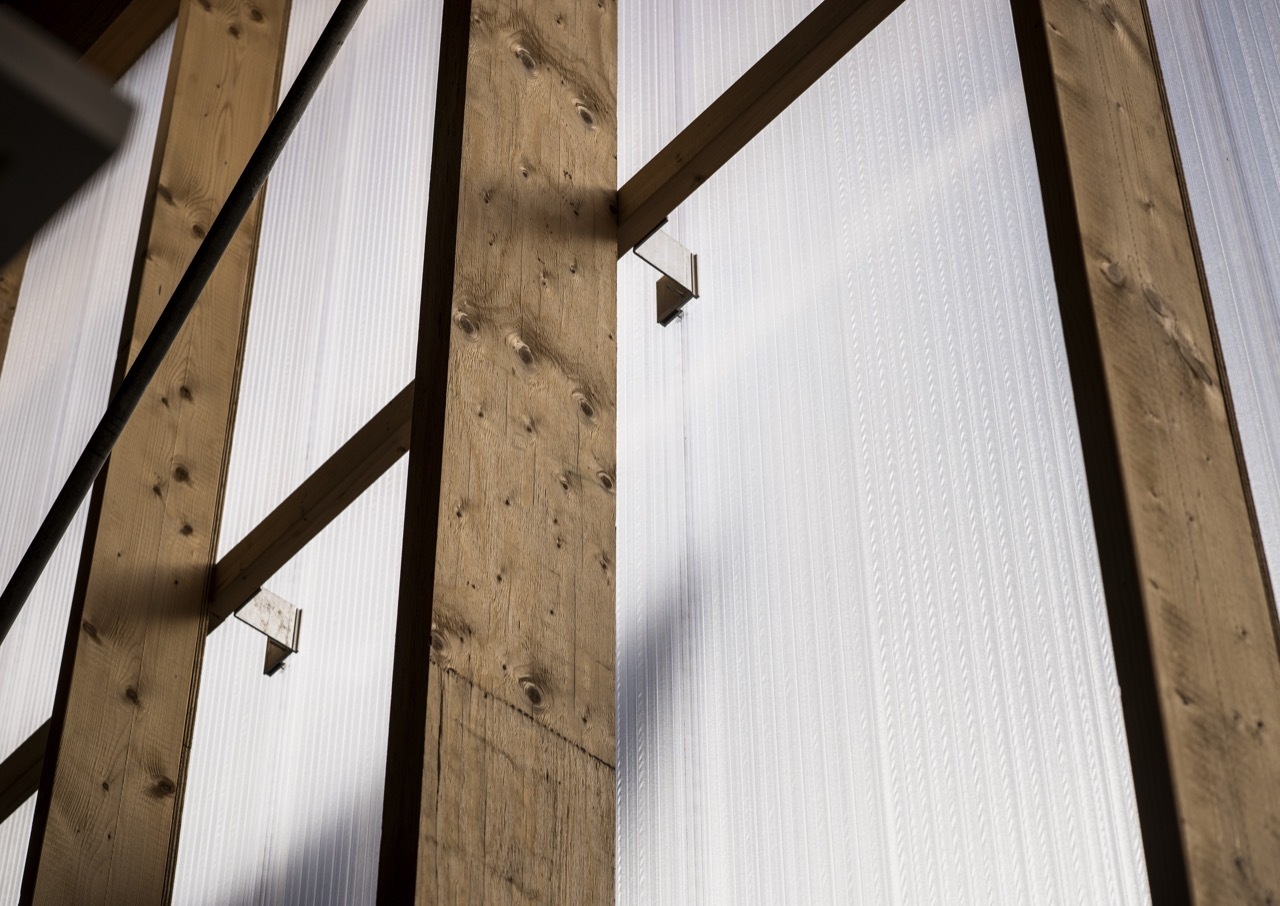Transparent polycarbonate stands out as a remarkable material across various industries due to its superior properties that set it apart from other materials. Renowned for its exceptional transparency and impressive robustness, it offers extraordinary durability against diverse impacts, ranging from blows to intense external pressures.
Why is polycarbonate so highly valued? One of the most notable advantages of transparent polycarbonate sheets is their superior resistance compared to glass.
While offering the same level of transparency as glass, polycarbonate is 250 times more impact-resistant while weighing only half as much. This makes it not only an efficient substitute but also a preferred material in contexts where reduced weight and high resistance are essential.
Polycarbonate excels in acoustic and phonetic insulation, adding extra value to applications requiring noise reduction. In construction, its usage is increasingly frequent, benefiting from its adaptability to various processing conditions without being affected by temperature fluctuations.
Key Advantages of Transparent Polycarbonate
Transparent polycarbonate represents an innovative and multifunctional solution in the world of plastic materials, combining the transparency of glass with a series of superior benefits that make it a favorite across diverse applications.
This material is distinguished by its remarkable impact resistance, being 200 times more durable against impacts compared to traditional glass. This property makes it ideal for use in locations exposed to severe weather conditions or areas with heavy traffic.
One of the most appreciated advantages of polycarbonate is its lightweight nature, which simplifies handling and installation while minimizing the structural effort required for supports. This feature, combined with its ability to filter UV rays without compromising clarity, ensures efficient use in both construction and industrial projects.
Polycarbonate also excels in terms of versatility, being available in a variety of thicknesses, colors, and finishes, which allow easy adaptation to the specific requirements of each project. Furthermore, it can be easily cold-formed, opening limitless possibilities for custom and innovative designs.
In addition, these transparent polycarbonate sheets offer significant benefits in terms of energy efficiency and thermal comfort. The material ensures superior thermal insulation, contributing to maintaining a constant interior temperature and reducing energy costs. It also effectively prevents condensation, eliminating humidity-related issues and maintaining an aesthetically pleasing appearance.
In terms of safety, polycarbonate is flame-retardant and resistant to chemicals, two essential properties in industrial environments or high-risk situations. Unlike glass, it does not shatter into hazardous shards, reducing the risk of accidents.
Polycarbonate applications are varied, including roofing and greenhouses, where its durability and transparency are critical. It is the perfect choice for windows, doors, and various forms of protection such as shields and barriers, and its ability to withstand outdoor conditions makes it ideal for signage and advertising panels.

Fields of Application for Transparent Polycarbonate Sheets
Transparent polycarbonate, an innovative and multifunctional choice for various projects and industries, stands out as a top material due to its exceptional durability and flexibility. Easily adaptable and resistant to weather conditions, polycarbonate proves useful in numerous applications requiring superior aesthetic and functional qualities.
In the advertising sector, polycarbonate revolutionizes the fabrication of lightboxes and advertising panels, thanks to its ability to disperse light evenly. This feature enhances visibility, essential for capturing public attention.
In urban transportation, transparent polycarbonate bus shelters are an example of how durability and optical clarity can combine to provide efficient and safe shelter for passengers while maintaining a clean and modern design.
Polycarbonate has also found its place in interior design, being used to create innovative and practical interior decorations such as tables or partitions. This material allows the creation of bright and airy spaces, ideal for modern environments.
In construction, polycarbonate is frequently used for making canopies or pergolas that not only protect against the elements but also allow natural light to pass through, improving the atmosphere of the covered spaces. For roofs and domes, such as those in shopping centers, polycarbonate ensures optimal natural lighting and contributes to the modern aesthetics of buildings.
For residential use, solid polycarbonate sheets in balcony or terrace enclosures provide effective protection against the elements without obstructing the view. Additionally, railings made of this material add a modern and safe element to any residential space.
Transparent polycarbonate stands as a viable and superior alternative to glass in numerous projects, offering a unique combination of advantages that make it an excellent choice for a wide range of applications. Its enhanced resistance, transparency, lightweight nature, adaptability, thermal properties, durability, and safety make it a versatile and valuable material for construction projects, interior and exterior design, as well as various industrial applications.























